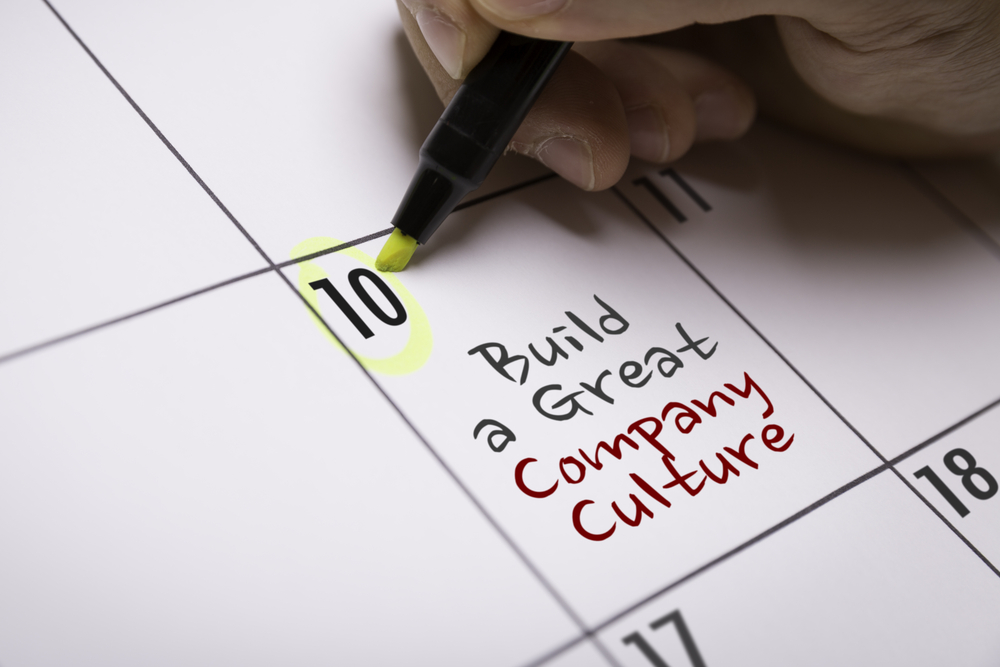
by American Business Women's Association | Nov 21, 2023 | Blog, Business, Business, Uncategorized
3 Ways To Keep Burnout From Spreading Like Wildfire
Burnout is impacting every company, position, and industry. With 90% of the workforce experiencing burnout in the last year, you can no longer afford to ignore this epidemic. It’s affecting teams, leaders, and the whole organization…even you.
Even if you’re not the one in burnout, it still impacts you.
Think of it this way. How do you feel the next morning when you don’t get quality sleep the night before? Grumpy? Groggy? Foggy? Impatient, irritable, unfocused? Lack of sleep impacts your perspective, attitude, how you respond to others, and how you react to situations.
The same thing happens with burnout. It doesn’t stay self-contained.
When a team member, let’s say Burnout Betty, has burnout, it impacts how she leads, communicates, listens, focuses, thinks, interacts, her behaviors, energy, mood and disposition.
It literally impacts everything. When one person is in burnout, it also trickles out to others, because burned out people burn others out.
Even if you don’t have burnout, you’re being impacted by it when someone else does or is on the brink of it. You have the power to do something about it. What can YOU do?
START A DIALOGUE—Begin talking about burnout is the best place to start. Even though burnout is rampant in the workforce, there’s still some stigma around it. People often fear, if they admit they have it, what will others think, do or say. Will my leaders think I can’t do my job? Will they take away responsibilities or will they lose trust in me?
If Burnout Betty (BB) isn’t focused, she becomes distracted, unproductive, and making more errors. She will do the same work multiple times, miss deadlines or forget to meet a client. Those are best case scenarios. BB will easily cut corners leading to cybersecurity attacks, safety issues and possible injuries.
When BB misses deadlines, makes mistakes, or has to redo work, how does that impact you? You might have to stay longer, do some of her work, or maybe your work gets pushed back waiting on her to get her part to you, which means missing dinner with your family, being absent at your kids’ activities, or not meeting your deadlines.
Lean into your storytelling skills. Share your burnout story with BB. When you were in it, what led to burnout in your life, and the strategies you implemented to move past it.
When people are in burnout, they tend to pull away and isolate themselves. When you tell your burnout story, they will start to engage. The more you talk about burnout, the more it reduces this stigma. In the process, you allow others who are experiencing it to not feel alone and to know that someone, somewhere gets it and understands. You create a safe place of compassion and empathy.
This lets others know it’s okay to feel burned out. You can still love your job and be burned out.
CREATE AWARENESS AROUND BURNOUT—Burnout doesn’t discriminate. It’s impacting your people. The more your team knows what to look for and what to do to prevent it, the less likely they will find themselves in it. Develop a keen eye, because you can’t change something you aren’t aware exists.
Since burnout impacts mental health, Burnout Betty is easily frustrated or irritable, making it harder to communicate or interact with her, because others don’t want her mood to affect them. One Burnout Betty, Negative Nancy or Toxic Tim can bring a dynamic team to a halt.
Talking to BB can leave the most positive person in a negative state, because she doesn’t listen or she’s in a bad mood. So, every conversation takes longer than it should, which means less time for you to tend to your daily tasks.
Build a task force of people who want to be the eyes and ears in your organization in regards to burnout. They can gather information, ask questions to BB and other team members, and start creating a strategy to combat this epidemic. Then take the information they gather, and do something now to help them prevent it.
This allows BB to know that she is being heard and understood and that she matters. One of the biggest qualities people want in their company is to know they matter. When BB knows she matters, she feels supported, knowing she will get the help she needs to combat burnout.
Hint: Time off is great, but vacation won’t cure burnout. Once you create awareness around it, share with your people day to day strategies that work to help alleviate burnout.
IMPLEMENT A BURNOUT PROGRAM—This is the key, fundamental element. Talking about it is a great beginning, but it’s imperative to do more. The only way to prevent and address burnout is to be intentional and strategic with it. Workplace wellness programs aren’t enough; 97% of them don’t specifically address or help with burnout, which is also why 80% of employees aren’t actively involved in wellness programs.
As a leader, you have to do your part to help your people with burnout. If you want long term results, your organization MUST implement a continual program (not a one and done) to help people like Burnout Betty with burnout and others to prevent it.
A long-term strategy is where the magic happens with burnout. Burnout is a slow crawl, and working through it is multi-layered. Whether it’s an online course, bootcamp or Train the Trainer certification, burnout training is no longer a “nice to have.” It’s imperative if your company wants to keep their top talent and create a happy, thriving workplace and culture.
The most successful burnout programs have these key components: accountability, support, encouragement, and Q&A.
Burnout doesn’t go away on its own. With most industries incurring staff shortages, it’s up to you, as a leader, to invest in your people if you want to keep them. Since the #1 reason why people leave organizations is due to burnout, it’s a huge opportunity for you to end the burnout epidemic by starting the dialogue, creating awareness and implementing a burnout program in your company. It’s a win-win for everyone. What will you do to help your people end burnout?
About the Author, Jessica Rector
Jessica Rector, MBA, author of the #1 best-selling “Blaze Your Brain to Extinguish Burnout” and nine other books, helps organizations, leaders, and teams Say Yes to eradicate burnout and enhance mental health. As a burnout trailblazer, her research is used in her consulting and speaking and often shared on her podcast, “The Say Yes Experience.” For how Jessica can help your organization and team, go to www.jessicarector.com

by Rene Street | Sep 16, 2023 | Blog, Business, Business
In an era marked by immense volatility and complexity, characterized by technological advancements, business consolidations, fierce competition, and economic fluctuations, you may find yourself in an unprecedented time of change. The aftermath of the pandemic continues to linger, with burnout, stress, and overwhelm persisting among individuals and teams. Amidst this tumultuous landscape, the challenge is this: How can organizations emerge stronger from the trials of recent years? How can they cultivate a culture that thrives, adapts, and responds effectively to the unpredictable? The answer lies in fostering an emergent culture – one characterized by change management prowess, response agility, and a positive environment with fulfilled employees.
Understanding Culture
When more than two people come together, whether as a couple, a family, or a company, they form a human system. Within this system, culture serves as the driving force or energy. Culture possesses the power to create and destroy, providing guidelines for interaction, conflict resolution, motivation, and progress. The objective of examining and shaping organizational culture is to channel the collective energy of individuals into a productive force – one that mirrors the synchronicity found in natural phenomena, such as the coordinated movements of a school of fish or flock of birds. This is called an emergent culture.
Influencing Culture
Effective impact on company culture entails understanding and influencing the energy inherent within the human system. To initiate this process, focus on the following areas:
Start With The Leader
All culture begins with the CEO; the leader of the organization. What is their vision? Who are they as a leader? What are their values? Are they operating and living congruent with all of those markers, no matter how challenging or stressful the circumstances may be? Having a CEO who can answer those questions clearly and can live in alignment with them consistently is the foundation on which a company’s culture gets built. If the CEO is frazzled, overwhelmed, and in survival mode, that is going to set the tone for the entire organization. Whatever energy the CEO brings to the company and to their life will be the energy that other people pick up on and assimilate to in order to fit in and make it.
Thus, the CEO must be conscious. They must be awake and aware of what they’re emanating through their words and their actions. They must ensure that they have a clear vision, bolstered by positive moods and inspiring language that rallies people around their vision and engages them into action. Human systems are guided by behaviors, beliefs, actions, what’s said, what’s unsaid – all of that equates to the energy of the human system, and energy is culture. So, what kind of culture is the CEO creating?
Cultivate the Leadership Team
The leadership team further propagates cultural attributes throughout the organization. Behaviors exhibited by this team tend to cascade down to various departments. Similar to the CEO, leadership must demonstrate consciousness and accountability for their actions. This includes acknowledging their role in shaping the culture and undertaking personal growth to support a healthy, high-performance human system. By focusing on the following key elements, the leadership team can contribute to a thriving culture:
- Achievement. The company knows what they’re here to do, why they’re doing it, and how they’re measuring it. Organizational achievements are individual achievements, and vice versa. Achievements are specific, measurable, attainable results that are bound in time.
- Self-actualization. Each person is conscious. They know what their strengths and weaknesses are, and they’re responsible for them and the impact they have on others. They’re doing their own development and personal work just like the CEO is.
- Affiliation. People are partnering, collaborating, sharing ideas, and problem solving on an interdepartmental level. Cross-functional teams are committed to the noble cause and vision for the organization and are coming up with ways to problem solve together to fulfill the vision.
- Humanistic Managers. Managers authentically care about their people. They are aware of what’s going on in their employees’ lives, what their goals are, and how they want to grow. When an employee knows to their core that their manager has their best interests at heart and they want them to thrive, difficult conversations to improve performance can happen. Mentorship, coaching, and caring for people comes with humanistic management, and it supports employees who grow and thrive.
Assess Environment and Employees
Employee behavior provides insights into the prevailing environment. Key considerations include whether they experience autonomy, trust, and support in their roles. Ask these questions to assess the environment that your employees are navigating:
- How well do employees handle changes and upsets and challenges in the market?
- Do people feel the freedom and trust to share new ideas, take risks and have space to fail?
- Is there space in the time at work to ideate, innovate and co-create?
- Are the meetings inspirational and motivating or just a laundry list of getting things done?
- Is everyone clear on what the noble cause is?
- Is the right architecture or systems in place for people to work effectively together?
- Is the leadership team dismantling anything getting in the way of employees taking the ball and running with it?
- If there’s a problem, are the employees the ones to solve it?
- Are people being given the autonomy they need?
- Are people held accountable to their agreements and promises and measures?
- Can you have difficult conversations?
Achieving Resilience Through Emergent Culture
In times of uncertainty, organizations with the ability to adapt and pivot harness their power. Such resilience hinges on a healthy human system and a shared commitment to the company’s purpose. Leadership needs to exemplify responsibility, optimism, and collaborative problem-solving across departments to overcome obstacles and realize the company’s vision. This approach cultivates an emergent culture, capable of navigating challenges effectively.
While creating an emergent culture demands considerable dedication, care, and focus, the rewards are boundless. With a culture founded on change management skills, response agility, and employee fulfillment, organizations can not only weather storms but also soar to new heights.
About the Author, Margaret Graziano
Margaret Graziano is the founder and CEO of KeenAlignment, as well as a Wall Street Journal Best-Selling Author for her book “Ignite Culture.” She has been recognized as one of Silicon Valley’s Top 100 Women Leaders. Magi’s groundbreaking work is driven by her power to uncover and catalyze human potential. Go to https://keenalignment.scoreapp.com to take KeenAlignment’s Culture Assessment and see if you have an Emergent Culture.

by American Business Women's Association | Jul 17, 2023 | Blog, Business
When we think about famous visionary thinkers, we subconsciously assume that they have some magic characteristic that the rest of don’t have or can’t achieve. But in reality, the only magic they have is an intuitive understanding of how to avoid some very common creative thinking blocks. One of those blocks is the Curse of Knowledge, a cognitive bias, or mental shortcut, that all humans share.
Stuck Inside the Box: The Curse of Knowledge
You’ve probably heard the term “Thinking outside the box.” And you’ve probably, at some point in your career, been asked the think outside the box. But without any understanding of why the box is there or how it was created, it’s hard to know how to break out of it. The reality is that we each create our own “box”, through this Curse of Knowledge.
To understand this concept, imagine for a moment that your task is to think of new ideas for salad dressing. Try to come up with a few in your mind right now – don’t skip ahead!
Chances are, the ideas that came to your mind were incremental variations of existing flavors or ingredients. You may have thought of fruit-flavored dressing. Or spicy, chipotle dressing. Or perhaps dressing that’s flavored like your favorite cocktail. Or your favorite dessert.
All really interesting ideas, IF you are only looking for ideas that don’t change the current nature of salad dressing, nor the way it’s currently manufactured, packaged, sold, or used. The task was to find NEW ideas for salad dressing. That challenge was not limited to simply new flavors, but your brain likely limited your thinking to mostly just new flavors.
Here’s why incremental ideas tend to be the first, and sometimes the only, kind of ideas to emerge. All humans rely on past knowledge to subconsciously try to shortcut problem-solving. We instantly – and subconsciously – call on everything we know from the past to come up with solutions for the new problem. While this ability to call on past learning is an incredibly useful trait in many situations (it’s one of the reasons we’re at the top of the food chain), when you’re looking for new ideas and solutions, it actually becomes a significant barrier. It limits your thinking to nothing but slight variations of what already exists.
The minute you saw the words “salad dressing”, your brain made a bunch of instantaneous assumptions that you’re likely not aware of. Those assumptions were probably things like:
- Salad dressing comes in a bottle.
- It’s liquid.
- It’s stored in the refrigerator.
- It’s used on lettuce.
- Salad is eaten from a bowl or plate.
- Salad is eaten with a fork.
Using the salad dressing challenge again, now assume one of the above “facts” does NOT have to be true. What ideas could you come up with then? You might think of ideas like:
- Salad dressing that you heat in the microwave (not cold).
- Dressing for fruit, or for meat (not used on lettuce).
- A powder whose full flavor is activated when it contacts the moisture of the lettuce (not liquid).
- Salad dressing in the form of a wrap, so you can eat the salad on the go (salad isn’t served on a plate).
- Salad dressing in the form of an edible skewer (salad isn’t eaten with a fork).
As you can see, the nature of the ideas that arise after crushing the imbedded assumptions is dramatically different from the ideas that came before. That’s because your brain is no longer limiting your creativity with artificial guardrails that may not actually exist and that you weren’t even consciously aware of.
Interestingly, the more expertise you have in an area, the more of these limiting assumptions you have subconsciously imbedded in your thinking. So, as an expert in your field, you likely have MANY imbedded assumptions that you’re not aware of, but that are likely impeding your creative thinking in a significant way.
The Cure: Assumption Crushing™ Process:
Fortunately, there is an antidote to the curse of knowledge. Assumption Crushing™ is a technique that involves consciously surfacing and challenging our hidden assumptions.
Assumption Crushing™ Step 1: Surface your subconscious assumptions by generating a long list of statements that start with things like:
- Well, in our business everyone knows…
- We have to…
- Our product is/does/has…
- Well, of course …
- We could never…
Be sure to list some really obvious, superficial, or seemingly trivial “facts,” observations, processes, etc. Sometimes breaking the obvious ones can lead to the most innovative ideas. For example, the fact that salad dressing is liquid seems fairly trivial. But breaking that assumption led to some truly breakthrough ideas.
Assumption Crushing™ Step 2: Once you’ve come up with a long list, pick one that may not have to be true, and start to think of new ideas based on breaking that one. Then pick another and do it again. And again. You’ll amaze yourself with the innovative ideas you come up with.
Remember that the Curse of Knowledge is based on experience and expertise. Many people often assume that the best way to get new thinking, new ideas, and new solutions is to bring together a bunch of experts on the topic. But the reality is that all those experts will have a very similar set of subconscious mental frameworks. (They’ll all have essentially the same Curse of Knowledge.). A better way to generate new ideas is to invite a few experts, and then several other people with different experiences, knowledge, and perspectives. Those non-experts will help force the experts to confront and overcome their curse of knowledge.
The Curse of Knowledge is a formidable adversary that exists in our brains all the time and hinders our visionary potential. By embracing Assumption Crushing™, we can shatter the chains that confine our thinking and unlock the path to visionary breakthroughs.
About the Author:
Susan Robertson empowers individuals, teams, and organizations to more nimbly adapt to change, by transforming thinking from “why we can’t” to “how might we?” She is a creative thinking expert with over 20 years of experience speaking and coaching in Fortune 500 companies. As an instructor on applied creativity at Harvard, Susan brings a scientific foundation to enhancing human creativity. To learn more, please go to: SusanRobertsonSpeaker.com.








